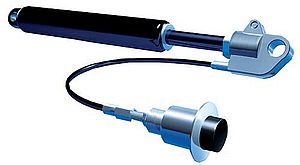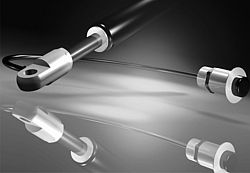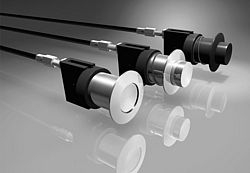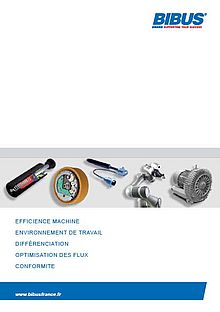Lockable gas springs

The principle of the lockable gas spring is simple: a floating piston separates the gas chamber at the rear of the tube from the oil chamber at the front of the tube.
Two types of lockable gas springs are available:
Lockable compression gas cylinders
Lockable compression gas cylinders have an internal mechanism to stop and lock the cylinder rod in any position of the cylinder stroke, using an external control system.
Several types of lockable compression gas cylinders are available :
Type B: Elastic blocking
Standard range of lockable cylinders, the locking is done on both gas chambers by closing the internal valve. Once this valve is closed, the cylinder rod is stopped whatever the stroke, but the locking remains elastic. |
Type K: Rigid in extension and relatively rigid in compression
| A valve, present on the piston of the cylinder, allows stopping and blocking rigid in extension and relatively rigid in compression. |
Type P: Rigid in compression and relatively rigid in extension
| The blockage is rigid in compression, due to the oil chamber, and relatively rigid in extension, due to the gas chamber. |
Type KX: Rigid blocking in compression and extension
| The locking is rigid in compression, thanks to the internal stop preventing gas compression by the floating piston, and in extension, thanks to the oil chamber. |
Lockable traction gas springs
The lockable traction gas springs are rigid in compression and extension.
A valve, integrated on the piston, allows stopping and locking rigid in extension, thanks to the oil chamber, and rigid in compression, thanks to the internal stop preventing gas compression by the floating piston.
In order to better adapt the traction gas cylinder to your needs, a wide range of control systems and accessories is available.


Configure your lockable cylinder
With this generator, quickly configure your lockable gas spring and get a reference.










